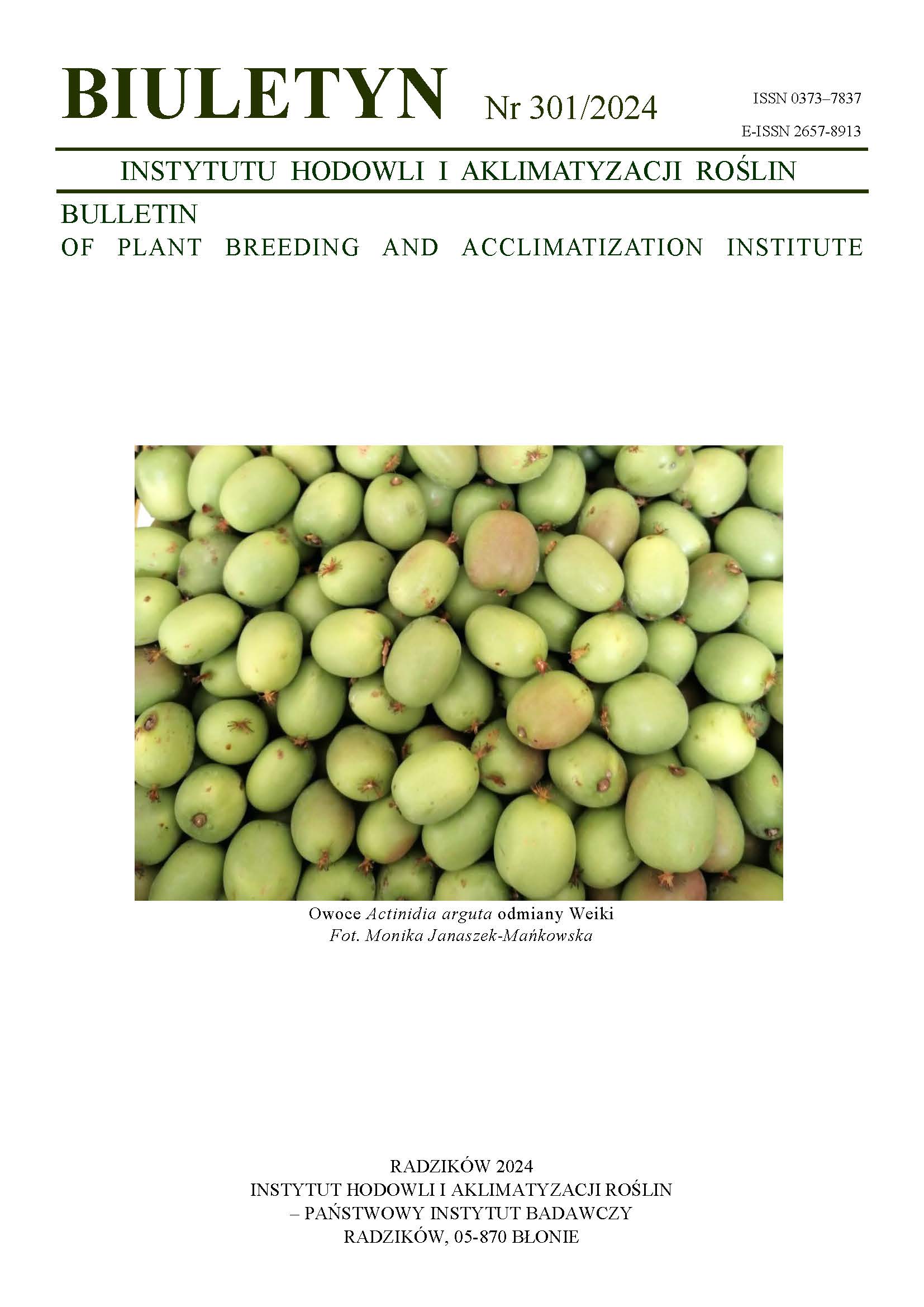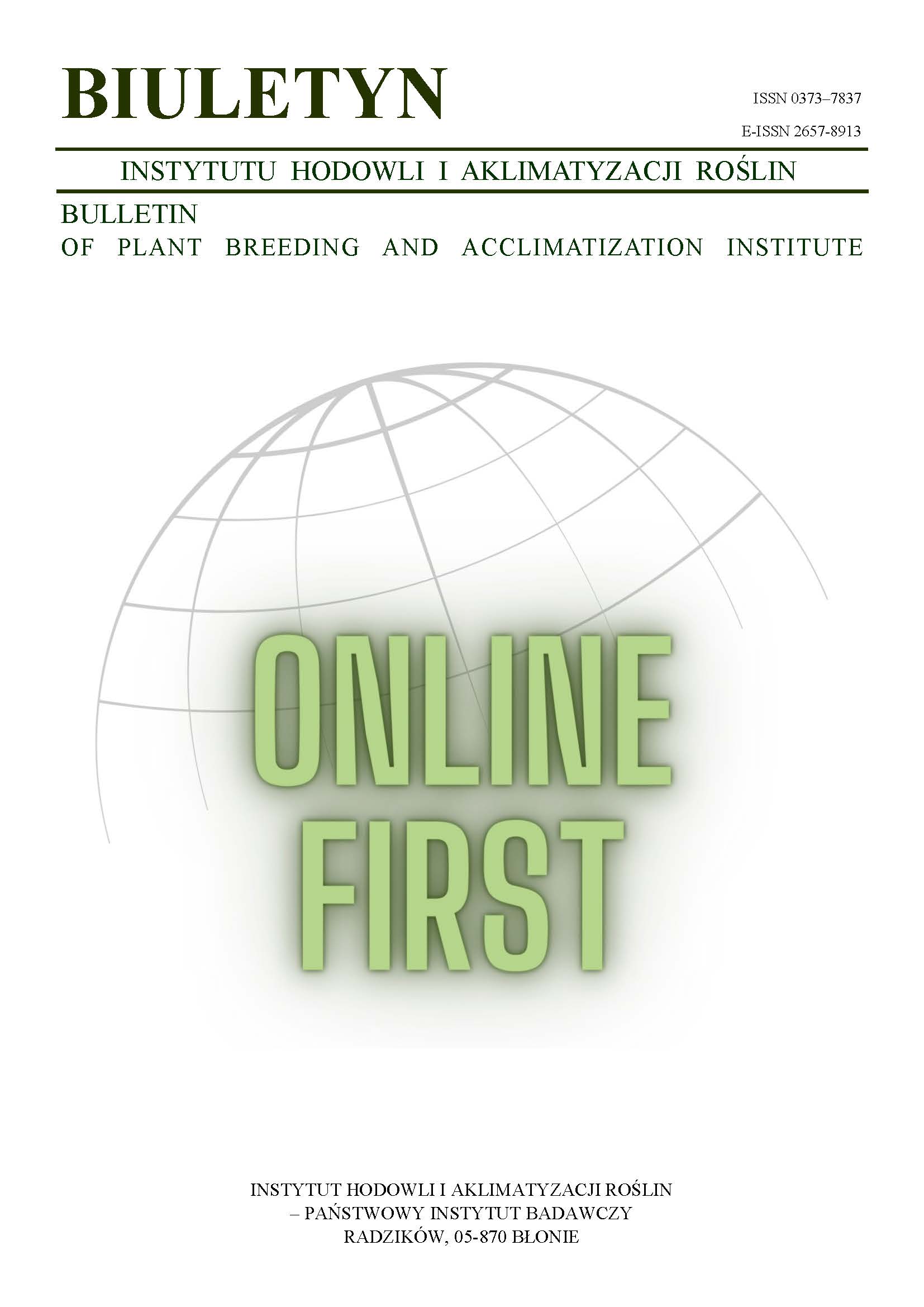The research on increasing resistance in rye to ergot and to Fusarium head blight by studying the host-parasite-environment relationship using genetic sources of resistance to Claviceps purpurea and Fusarium genus
Tomasz Kosiada
Uniwersytet Przyrodniczy w Poznaniu, ul. Wojska Polskiego 28, 60-637 Poznań (Poland)
Roman Andrzejak
roman.andrzejak@up.poznan.plUniwersytet Przyrodniczy w Poznaniu, ul. Wojska Polskiego 28, 60-637 Poznań (Poland)
Marcin Wieczyński
Uniwersytet Przyrodniczy w Poznaniu, ul. Wojska Polskiego 28, 60-637 Poznań (Poland)
Patrycja Marciniak
Uniwersytet Przyrodniczy w Poznaniu, ul. Wojska Polskiego 28, 60-637 Poznań (Poland)
Supporting Agencies
Prace zostały wykonane w ramach badań podstawowych na rzecz postępu biologicznego w produkcji roślinnej na podstawie decyzji Ministra Rolnictwa i Rozwoju Wsi nr HOR.hn.HOR.hn.802.16.2018, Zadanie 19.
Keywords:
Claviceps purpurea, ergot, Fusarium, genotyp, rye, sporysz, żytoReferences
Mańka K. 1974 Zbiorowiska grzybów jako kryterium oceny wpływu środowiska na choroby roślin. Zesz. Probl. Post. Nauk Roln. 160: 9 — 23.
Google Scholar
Kosiada, T. (2019) “The research on increasing resistance in rye to ergot and to Fusarium head blight by studying the host-parasite-environment relationship using genetic sources of resistance to Claviceps purpurea and Fusarium genus”, Bulletin of Plant Breeding and Acclimatization Institute, (286), pp. 127–133. doi: 10.37317/biul-2019-0028.
Authors
Tomasz KosiadaUniwersytet Przyrodniczy w Poznaniu, ul. Wojska Polskiego 28, 60-637 Poznań Poland
Authors
Roman Andrzejakroman.andrzejak@up.poznan.pl
Uniwersytet Przyrodniczy w Poznaniu, ul. Wojska Polskiego 28, 60-637 Poznań Poland
Authors
Marcin WieczyńskiUniwersytet Przyrodniczy w Poznaniu, ul. Wojska Polskiego 28, 60-637 Poznań Poland
Authors
Patrycja MarciniakUniwersytet Przyrodniczy w Poznaniu, ul. Wojska Polskiego 28, 60-637 Poznań Poland
Statistics
Abstract views: 192PDF downloads: 220
License

This work is licensed under a Creative Commons Attribution-ShareAlike 4.0 International License.
Upon submitting the article, the Authors grant the Publisher a non-exclusive and free license to use the article for an indefinite period of time throughout the world in the following fields of use:
- Production and reproduction of copies of the article using a specific technique, including printing and digital technology.
- Placing on the market, lending or renting the original or copies of the article.
- Public performance, exhibition, display, reproduction, broadcasting and re-broadcasting, as well as making the article publicly available in such a way that everyone can access it at a place and time of their choice.
- Including the article in a collective work.
- Uploading an article in electronic form to electronic platforms or otherwise introducing an article in electronic form to the Internet or other network.
- Dissemination of the article in electronic form on the Internet or other network, in collective work as well as independently.
- Making the article available in an electronic version in such a way that everyone can access it at a place and time of their choice, in particular via the Internet.
Authors by sending a request for publication:
- They consent to the publication of the article in the journal,
- They agree to give the publication a DOI (Digital Object Identifier),
- They undertake to comply with the publishing house's code of ethics in accordance with the guidelines of the Committee on Publication Ethics (COPE), (http://ihar.edu.pl/biblioteka_i_wydawnictwa.php),
- They consent to the articles being made available in electronic form under the CC BY-SA 4.0 license, in open access,
- They agree to send article metadata to commercial and non-commercial journal indexing databases.














